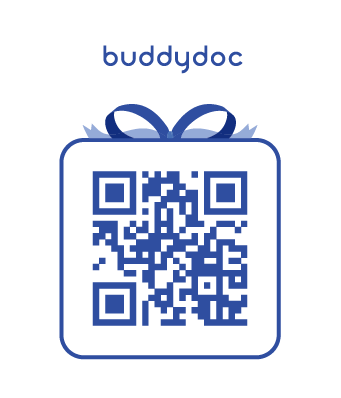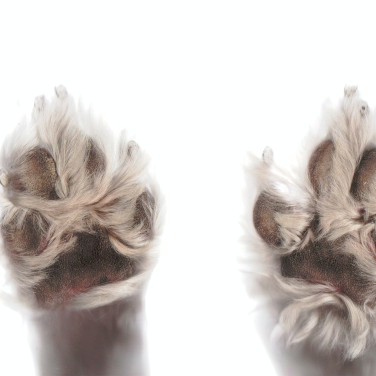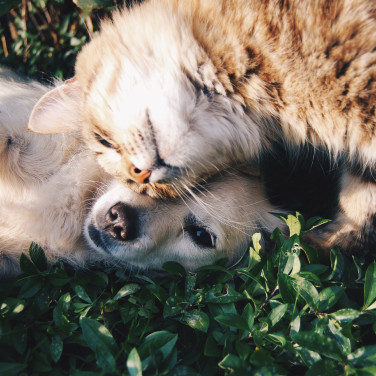ARTICLE
How to Help Your Dog Lose Weight - 7 Ways to Help Weight Loss in Dogs
페이지 정보
본문


Why it is important to manage your pet’s weight
A part of being a responsible pet owner is managing your pet’s weight. In this article, we'll discuss the importance of managing your dog's weight, how to determine your dog's ideal weight, and provide tips on how to help your dog lose weight if needed. With the right diet, exercise, and monitoring, you can help your furry friend maintain a healthy weight and live a longer, happy life.
Keeping your furry friend healthy and happy should always be a top priority and carrying a few extra pounds can bring serious health implications for your dog. An overweight dog is not only more prone to a wide range of diseases and conditions but the extra weight can be directly correlated with a reduced life expectancy. It can ultimately reduce a dog’s quality of life by affecting their mobility, energy levels, and overall mood.
That is why it's essential to manage your dog's weight and ensure they are at their ideal body condition score.
What is a Body Condition Score or BCS for pets?
The body condition score (BCS) is a tool used by veterinarians to assess a dog's weight and body composition. It evaluates your dog's overall appearance and determines if they are underweight, overweight, or at an ideal weight. By assessing your dog's BCS, you can get a better idea of their health and take the necessary steps to manage their weight.
Consult with your veterinarian to determine their ideal weight
The first step to managing and helping your dog lose weight is to consult with your veterinarian. They can assess your dog's weight and overall health thoroughly for a reliable foundation for your pet’s weight loss plan. Your veterinarian can help you determine your dog's ideal weight based on their breed, age, and overall health. You can also use a body condition score chart to assess your dog's weight. Your dog's ribs should be easily felt and not visible, and their waist should also be visible when viewed from above. If weight loss is necessary, a veterinarian can recommend a proper diet and exercise plan for them. Your vet can also rule out any underlying medical conditions that could be causing weight gain in your dog. To help your overweight dog, it is best to talk to your veterinarian for information. In the meantime, here are 7 ways you can start to help your dog right now!
-
Adjust your dog's diet
If you want to help your furry friend lose some extra pounds, adjusting their diet is a great place to start. There are a few ways to do this, such as reducing their portion sizes, changing to lower-calorie dog food, or incorporating more high-fiber foods into their meals. High-fiber foods can help your dog feel full and satisfied, while low-calorie dog food can assist in reducing their calorie intake. It is also beneficial to choose a brand of dog food that caters to your dog's specific needs, such as weight management, food sensitivities, or illnesses. Your veterinarian can offer guidance in choosing a balanced diet that meets your dog's nutritional needs while still helping them lose weight. Additionally, feeding your pup smaller, more frequent meals can aid in their weight loss journey. By making these small adjustments to your dog's diet, you can help them achieve their ideal weight and improve their overall health and well-being.
-
Learn the best way to transition your dog’s diet

When adjusting your pet’s diet, it is important to ease your dog into a new diet, rather than abruptly changing what they eat. Making a gradual transition to a new diet for your pup is crucial for their health and weight loss journey. Before making any changes, it's always a good idea to consult with your veterinarian for their professional advice and guidance.
This is a good guideline on how to transition your dog’s food:
For the first 2 days, feed your dog about 75% of their original food and 25% of the new diet.
Days 3 and 4, you want to evenly split their original dog food with the new food 50/50.
On days 5 and 6, you can make the transition from 75% of the new dog food with 25% of their original food.
Lastly, on day 7, you are good to feed 100% of your dog’s new diet food!
-
Keep your dog active
Just like humans, exercise is crucial when it comes to helping your overweight dog get healthy again. Regular walks and the chance to run and play in a safe leash-free environment can help burn extra calories, improve muscle tone, and increase their metabolism. Depending on your dog's age, breed, and health, the amount of exercise necessary to maintain a healthy life can differ. It is recommended that in your next visit to the vet consult with your veterinarian for any recommendation that includes how much playtime and other activities are recommended for your breed.
-
Understanding the difference between hungry and begging

Sometimes when dogs beg, it's not because they're actually hungry but rather because they want attention. If you find that your furry friend is prone to begging, consider changing their diet to one that is high in protein and has a good balance of fibers. This will help manage your dog's appetite and reduce their desire to eat unnecessary amounts of food. By feeding your pup this way, you can be confident that they will feel satisfied and feel fuller for a longer period.
-
Limit treats and table scraps
When it comes to giving treats and scraps to your beloved pet, it's important to feed them in moderation, much like how you would with candy for children. If you do use treats for training, it's a good idea to opt for options that are low in calories and fat and to limit the amount given. By being slightly more mindful of your pet's treat intake, you can help keep them happy and healthy for years to come!
-
Monitor your pet’s portion sizes more closely
To make sure you're controlling portions effectively, try to avoid free-feeding or guessing how much to serve, and instead use a measuring device. By doing this, you can be confident that you're providing your dog with the correct amount of food to help them achieve their weight-loss goals. Portion control is a key component to successfully managing your dog's weight, just as it is in us, humans.
-
Stay consistent after reaching the target weight!
You’ve finally helped your dog reach their weight loss goals, congratulations to you and your adorable little pup! However, it's important to keep in mind that about half of all dogs who lose weight end up regaining it. The good news is that keeping your pup on a weight-loss diet can significantly reduce the likelihood of this happening, even after they've reached their target weight. Remember, consistency is key! By sticking to healthy habits and routines, you can help your dog maintain a healthy weight and avoid rebound weight gain.
Extra tips for managing or helping your dog lose weight
Ultimately, not one weight loss plan fits all and small adjustments will have to be made according to your veterinarian's feedback and advice. From our experience, we recommend the following extra tips you can consider adding to your pet’s weight loss journey.
Interactive feeding methods, such as puzzle feeders or slow feeders, can help your dog eat more slowly and feel fuller in return. These feeders help prevent your dog from overeating, which can contribute to weight gain. If your dog has joint problems or is otherwise unable to do high-impact exercise, low-impact exercise options like swimming or gentle walks on a soft surface are great alternatives. These activities can still help your dog burn calories and stay active without putting too much strain on their body. Lastly, practicing positive reinforcement with praise, attention, and healthy treats when they reach certain weight loss journey goals can help encourage the lifestyle change they need. This approach can help keep your dog motivated and make the weight-loss journey a more positive experience for both of you.
Conclusion
Managing and helping your dog lose weight is crucial for their overall health and well-being. By following these guidelines and working closely with your veterinarian, you can help your dog achieve and maintain a healthy weight. Remember to be patient and consistent, as weight loss is a gradual process. With the right diet, exercise, and monitoring, your pup will be well on their way to a healthy, happy life.
Read more on the Buddydoc blog page!

Buddydoc provides a weekly updated blog to keep you informed on the latest and best ways to prepare and take care of your pet all year round. Check out more articles you may be interested in!













